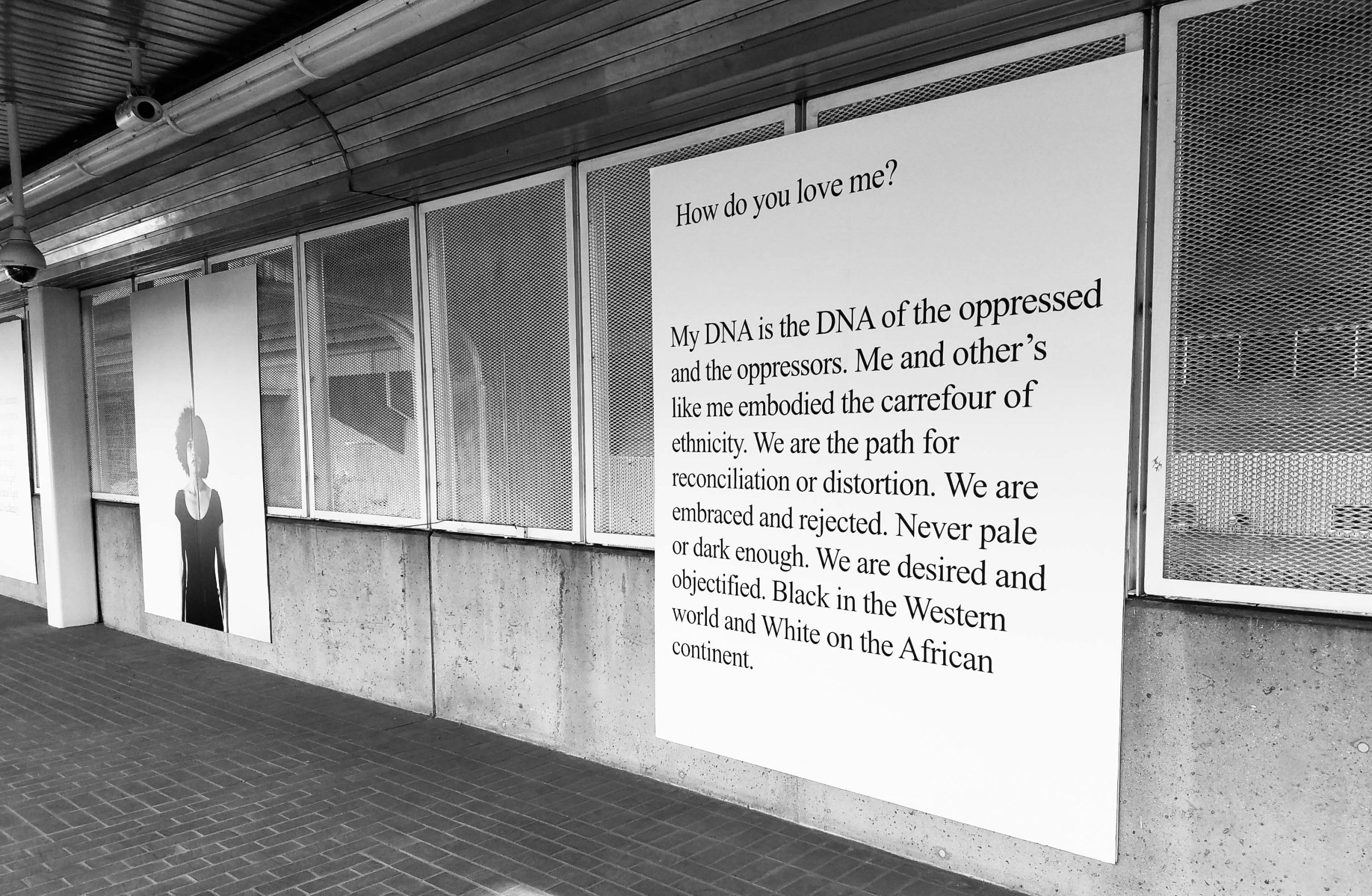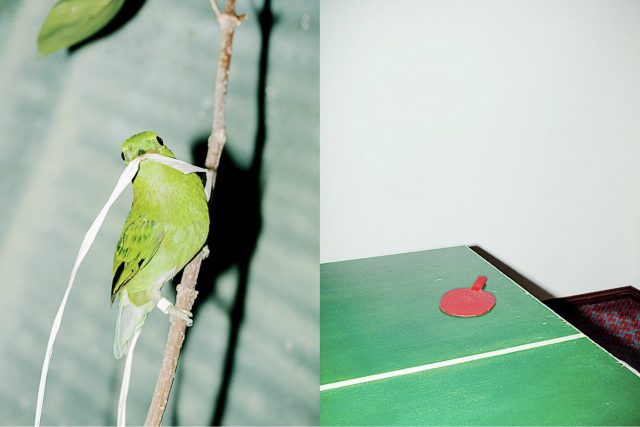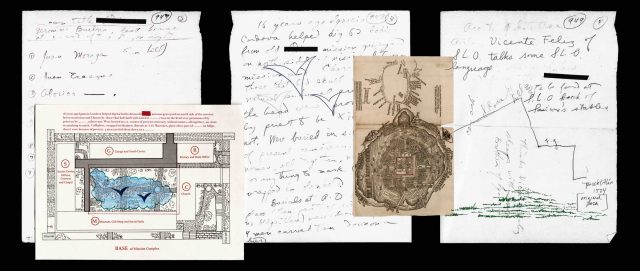Capture Photography Festival: 9 public art installations to check out at SkyTrain stations

Friday, April 2nd marks the return of one Canada’s biggest annual photography and lens-based art events! This year, multiple galleries and venues across Metro Vancouver will be featuring exhibitions and public art installations as part of the Capture Photography Festival. The best part is that a dozen public art installations will be available at Canada Line and Expo Line stations thanks to the partnership with Canada Line Public Art Program – InTransitBC and TransLink.
We’ve compiled a list of works you should check out across the system. You can check the full list of exhibitions, events, and art installations on Capture’s website.
How do you love me?
Location: Stadium–Chinatown SkyTrain Station, Vancouver, B.C.
–
How do you love me? has been just installed on the third platform at Stadium-Chinatown SkyTrain Station. Émilie Régnier‘s work presents black-and-white self-portraits with an Afro hairstyle as well as straightened hair, signifying versions of herself that are deemed more “Black” and more “white” by society at large. The artist questions the notion of “mixed ancestry” and explores her experience as a child who grew up in Gabon, Central Africa and later on as a teenager and young adult living in Montreal, Quebec.
Works from the Altered Landscapes series
Location: Waterfront Station, Vancouver, B.C., Canada Line
–
This is a series of photographs in which the artist Aaron Leon conveys an experience of wonder in nature. Each photograph is captured through a long shutter exposure over the course of several hours, during which time Leon alternates red, blue, and green filters in front of the camera. Together, the filters neutralize each other to create a white, or “balanced,” negative. However, anything that moves in the landscape during this process – such as light, water, foliage, shadows, or clouds – is exposed differently to the various color filters, appearing pearlescent in the finished image.
From A Still Unquiet Place
Location: Vancouver City Centre Station, Vancouver, B.C.
From A Still Unquiet Place transports you to the childhood home of the artist’s father in Red Pheasant First Nation, Saskatchewan. Meryl McMaster‘s head is obscured by a handcrafted headdress in a local military style. She is also wearing the tartan of her Scottish ancestors. In doing so, she evokes her complex ancestral identity while directing our attention to the history of tension and conflict on the land she traverses. Hanging off her back are lockets that hold collected images of her Indigenous and European ancestors. She rings vintage school bells that provoke her audience to consider Canada’s history of colonization and forced assimilation through the Canadian government’s administration of residential schools.
Works from the Chicharrón series
Location: Olympic Village Station, Vancouver, B.C.
Are you wondering the relation between a lime-coloured bird and a green ping-pong table is? Hiro Tanaka’s images capture encounters from his daily life, objects, still life, animals, and people. His works are close-up, blurred, and angled, so that the artist’s hand is felt in every frame. His work suggests relationships between images that are not immediately apparent and can be explored more closely by visiting the Olympic Village Station.

Archival – for Rosario Cooper and my 10 year old self
Location: Yaletown–Roundhouse Station, Davie Street, Vancouver, BC
If you visit the Yaletown-Roundhouse Station, you’ll notice a series of overlapping, scanned archival documents and images wrapping the walls of the station. This multilayered collage is a part of the public installation by Christine Howard Sandoval. She draws from the notebooks of J. P. Harrington, a linguist who extensively documented Indigenous cultures and languages in California. The work creates a presence for Indigenous ways of thinking about space and time and unsettles the archive documented by European settlers through the act of enlargement, annotation, and collage.

Works from the Yours to Discover series
Location: Broadway-City Hall Station, Vancouver, B.C.
Zinnia Naqvi is an emerging interdisciplinary artist who explores the ideas about authenticity and identity in the context of colonialism. In the series, Zinnia repurposed found photographs of the artist’s family visiting Canadian tourist sites prior to immigrating to Ontario. Naqvi subtly inserts critical commentary on Canadian ideals and immigrant experiences by juxtaposing these images with texts on national identity and race theory. By examining specific experiences of Naqvi’s family confronting Canadian ideals and values, these works also speak to broader patterns of cultural adaptation and belonging.
Works from the tth’í’ yáw nan (thread beads land) series
Location: King Edward Station, Vancouver, B.C.
In tth’í’ yáw nan (thread beads land), Krystle Coughlin Silverfox overlays photography of the streets of Vancouver with scanned images of beads. As an artist of the Selkirk First Nation, Coughlin Silverfox identifies beading as an important cultural practice for herself, as well as for many other Indigenous people. In literally placing beads over the landscape, Coughlin Silverfox points to the complicated history of the terrain in this region and the possibilities for a different, as yet to be imagined, future. By pointing to both the Western tradition of landscapes and the history of beading, this series simultaneously dismantles and extends cultural traditions.
The Misfits
Location: Aberdeen Station, Richmond, B.C.
Utilizing digital techniques and photography, Chun Hua Catherine Dong’s work illustrates the rich symbolic value of Chinese textiles to explore issues of gender and culture. The phoenix and dragon are interconnected symbols in Chinese culture and are often used together to symbolize auspicious and blissful relations between husband and wife. In The Misfits, Dong envisions the phoenix and the dragon not as opposites but as mirrors of each other. Adding her own twist to a traditional medium, the artist uses blue to return masculinity to the phoenix and plum blossoms to offer femininity to the dragon.
The Left Space
Location: Lansdowne Station, Richmond, B.C.
Brendan Fernandes is an internationally recognized Canadian artist working at the intersection of dance and visual arts. He uses historically significant patterns to tell stories of power, camouflage, and resistance in The Left Space. Patterns that are used in the installation across Lansdowne Station, were historically painted on warships to confuse the enemy. They are coupled with purple and magenta plaid, which at once symbolizes British colonial rule in Kenya, a warning to predators in the wild, and the flashing of police lights. The public installation offers a moment to contemplate solidarity, resiliency, protection, and care during these trying times.





